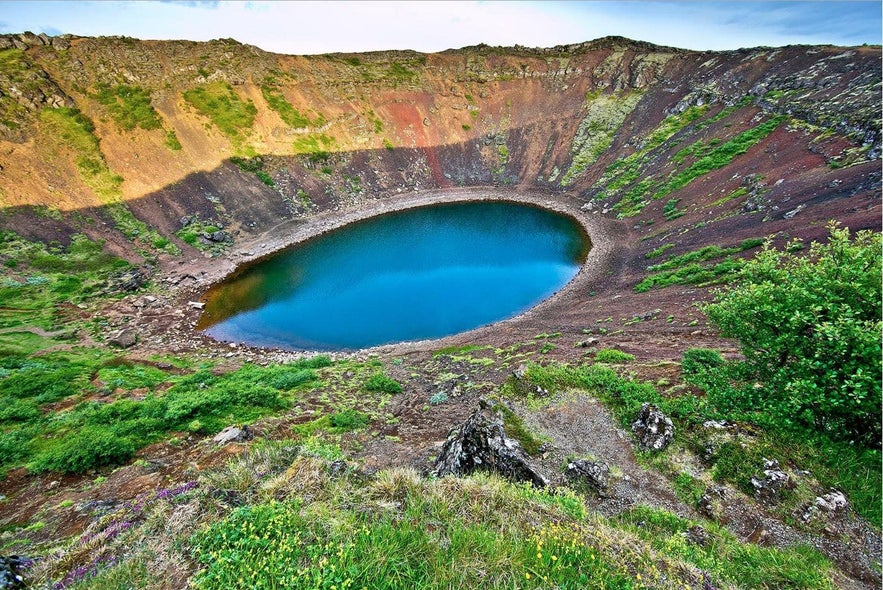Grímsnes is a volcanic system within the parish of Grímsness- og Grafningshreppur in South Iceland.
The system is marked west of Sog River, south of Hvítá River, east of Brúará River and north of Þingvellir. The lava fields of Grímsneshraun cover 54 square kilometres, including fields Seyðishólar-Kerhólahraun, Tjarnarhólahraun, Kálfshólahraun and Álftarhólshraun. Together, the volume of lava produced estimates at 1.2 cubic kilometres.
Why You Can Trust Our Content
Guide to Iceland is the most trusted travel platform in Iceland, helping millions of visitors each year. All our content is written and reviewed by local experts who are deeply familiar with Iceland. You can count on us for accurate, up-to-date, and trustworthy travel advice.
Photo above from The Golden Circle, Kerið Crater & Blue Lagoon | Super Jeep Tour
Volcanic Activity
The Grímsnes volcanic system is about 12 km long and 7 km wide. It has been inactive for the past 7000 years, making it both one of the smallest and least active volcanic systems of the entire country. The last period of volcanic activity in the area was in the early Holocene, the geological epoch that began approximately 11,700 years ago.
The Grímsnes fissure swarm is characterised by twelve individual fissure segments, which produce basaltic lava flows and a deposit of local scoria. The resulting features of the system are crater rows of single scoria cones and a single collapse crater.
Kerið is one of the individual craters within the system. The caldera is composed of red, as opposed to black, volcanic rock. Together with the blue lake at the bottom of the crater, and the green moss that has grown on the slopes, Kerið boasts a colourful display and constitutes as a popular attraction of the Golden Circle route.
-
See also: Golden Circle Tours
Another known volcanic station of the Grímsnes area is the cluster of craters known as Seyðishólar. The gravel of these craters is widely coloured a bright red, due to iron having oxidised in the lava.
Other Traits
Grímsnes has, for the past several decades, seen a great deal of cultivation. Multiple summerhouses dot the volcanic system, some of which stand right by the volcanic craters themselves. In an attempt to vegetate the premises, flora such as the lupine has been purposely grown in certain areas.
It is not known if and when the volcanic system might erupt again, and if it did, it would have damaging effects on multiple man-made structures. All earthquake activity in the area is, however, closely monitored, meaning that any chance of eruption would be anticipated well in advance.










